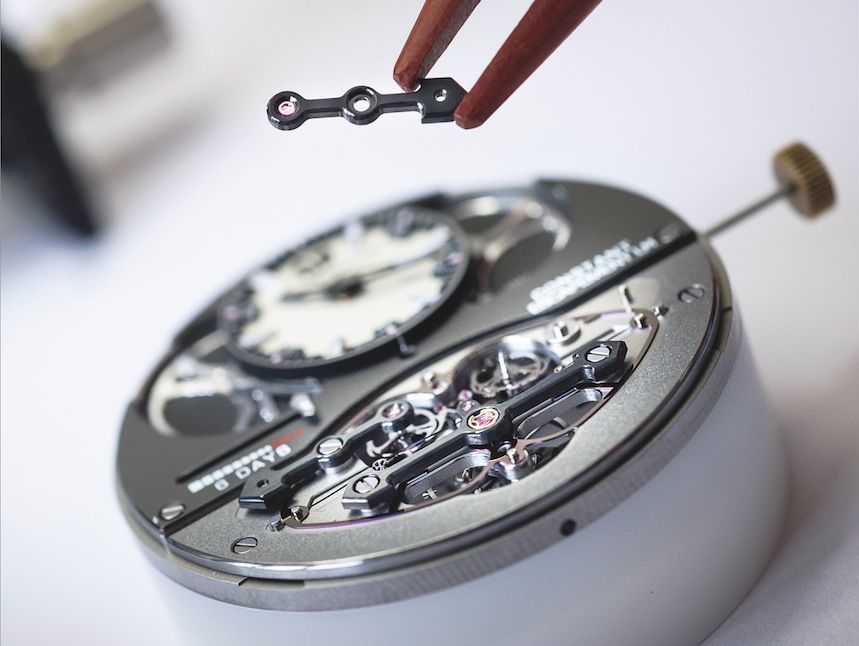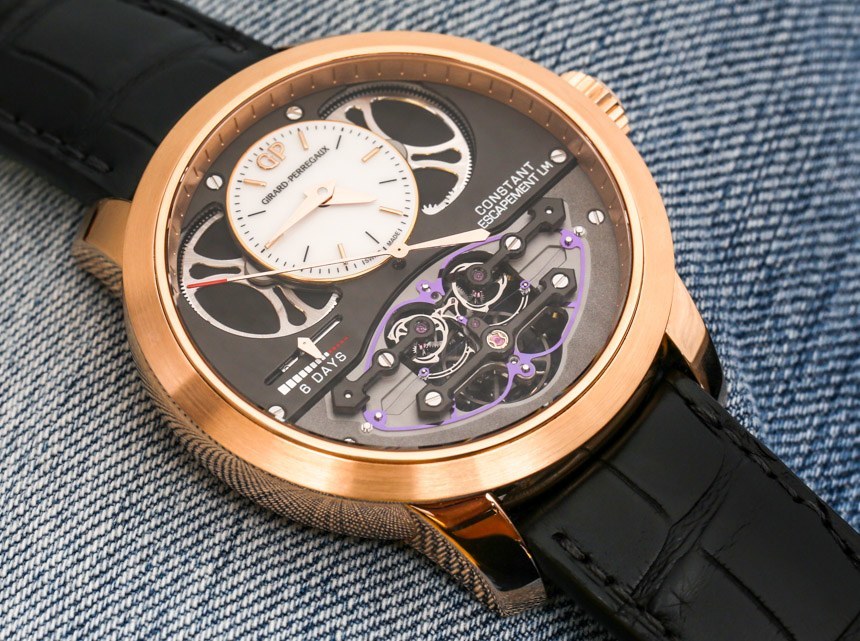
When Girard-Perregaux announced its Constant Escapement at Baselworld 2013, it was immediately considered to be one of the most impressive technological developments, not only of that year’s fair, but in the brand’s more than 220 years long history as well. Incorporating a constant force mechanism into a wristwatch movement is an immense challenge and one that resulted in numerous spectacular, albeit often compromised results. What allowed GP to leave the space-consuming fusee’s, chains and other devices out of the equation was the utilization of a space-age material called silicon.
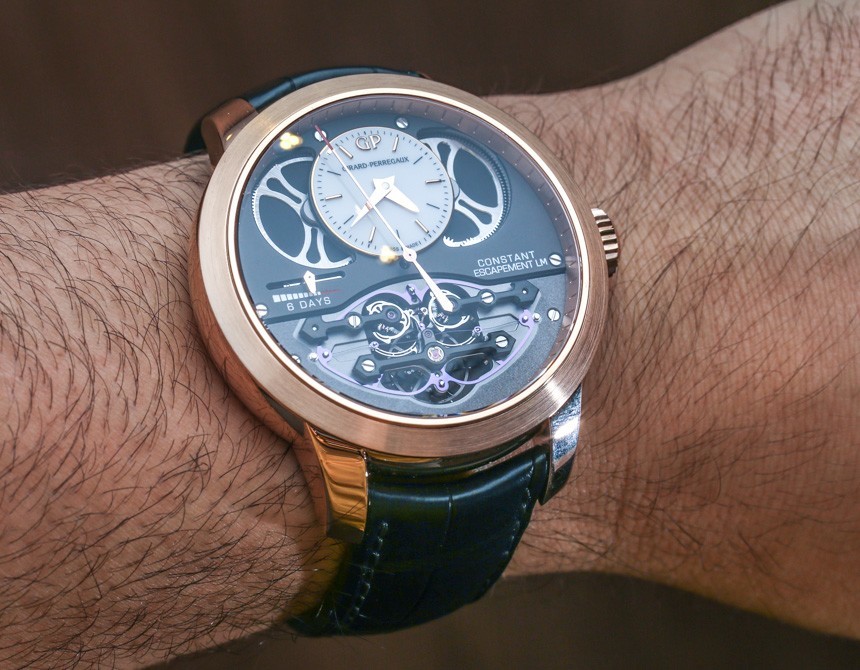
For 2014, the brand offers last year’s movement virtually unchanged, but now repackaged into a 48 millimeter wide pink gold case, an identically sized alternative to last year’s model in 18k white gold. It is arguably a modification that is as negligible and uninteresting, as important and exciting as the movement is beating within. Anyhow, it provided a superb opportunity to revisit this marvelous piece of engineering and see what emotions it evokes a full year after its debut. Ariel went hands-on with the Girard-Perregaux Constant Escapement L.M. executed in pink gold, so let’s see what this sublime piece of engineering is like when it is out in the wild.
What you are looking at below is the constant escapement itself, exposed at the six o’clock position in all its high-tech blueish glory. In our recent article about Ulysse Nardin’s new proprietary anchor escapement we discussed the numerous advantages of silicon in greater detail. In short, it is a material that offers greater reliability and durability thanks to its hardness and antimagnetic nature, plus it makes the manufacturing of incredibly fine components possible as it can be crafted with truly microscopic tolerances.
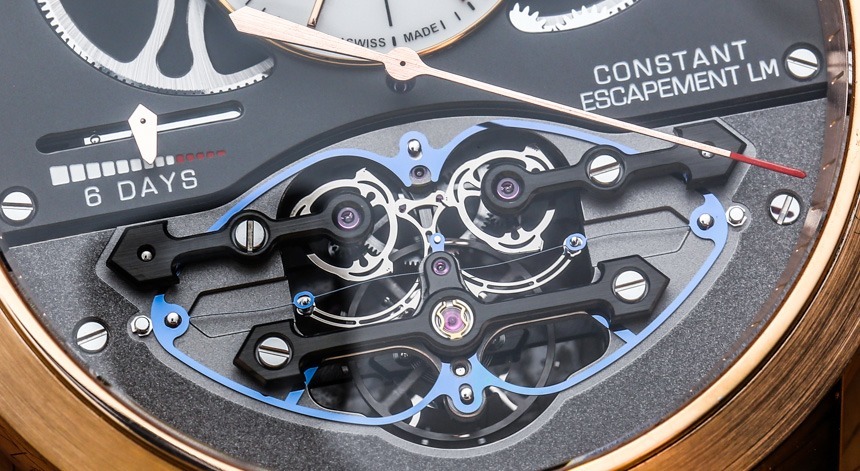
What Girard-Perregaux did with the freedom such manufacturing capabilities offer was tackle one of the greatest challenges of watchmaking: ensuring that the escapement of the watch remains independent from the state of the mainspring barrel. What this means in practice is that as the mainspring winds down its torque declines, causing discrepancies in the rate of the watch. Girard-Perregaux’s answer to that takes shape in a large oval frame with two blades running through it, all crafted from silicon.
These seemingly waving “lines” which connect the two furthest points of the frame are the blades and their sole duty is to lend the pivoting motion of the pallet fork the exact same momentum, time after time, 6 times a second, every second of every hour of every day. The brand’s video demonstration of last year still applies and beautifully illustrates the snapping motion of the blades.
What it does not discuss, however, is where this odd-looking (and yet amazing) mechanism belongs within the world of fine watch making and how it fits into the portfolio of a brand that had long emphasized its more traditional caliber designs and aesthetic cues. The point I want to make is that today’s luxury watch industry is at a point where a promising 18th or 19th century date of establishment is just that: a promise.
It implies that the manufacture at hand has had hundreds of years to accumulate the know-how of several generations of watchmakers, and with which at its disposal is more likely to create something outstanding than the others. With that said (before we move on) we must stress that there is no direct or indirect correlation between the time for how long a brand has been in operation and what it is technically capable of.
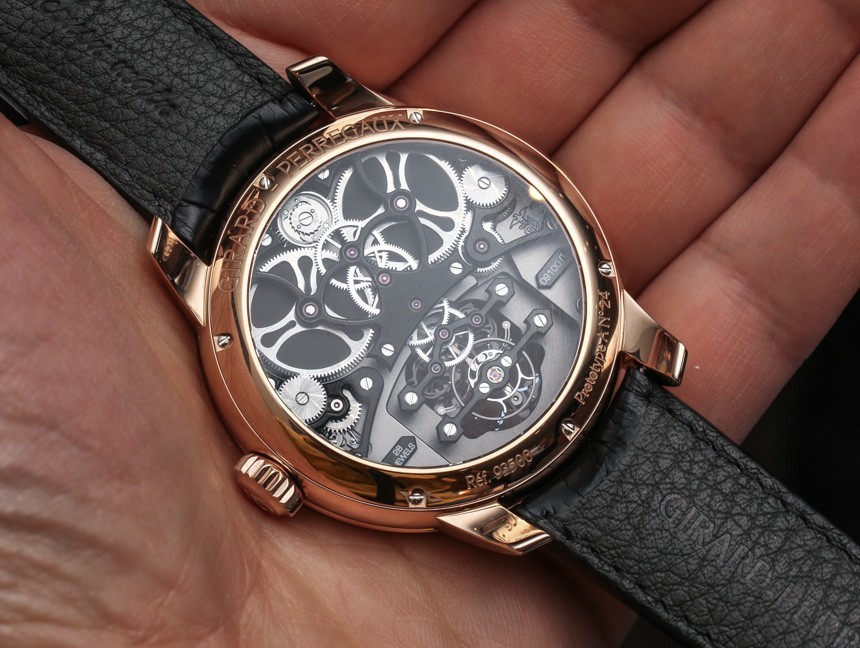
And since watch enthusiasts of today are educated to a level where the date at which a “maison” was established carries little to no weight upon judging their next investment, it is only through such amazing and novel ideas that brands today are able to maintain and evolve their customer’s idea of them being more worthy of their hard earned money. With marketing terms this is also referred to as a halo-effect or halo-product and this watch is a prime (and again, very impressive) example of that and so I assume Girard-Perregaux’s management suffers from no trouble sleeping over the sales figures of the Girard-Perregaux Constant Escapement, and here’s why:
Highly complicated and pioneering products like the Girard-Perregaux Constant Escapement represent more of a marketing vehicle than a product that has to perform well right from the moment it debuted. Its primary duty is to carry the message that the brand is capable of rejuvenating itself and is looking not at its past self but rather it is forming its future. And while we are discussing future matters let’s briefly look even further ahead of us, into the future of such inventions as the Girard-Perregaux Constant Escapement.
